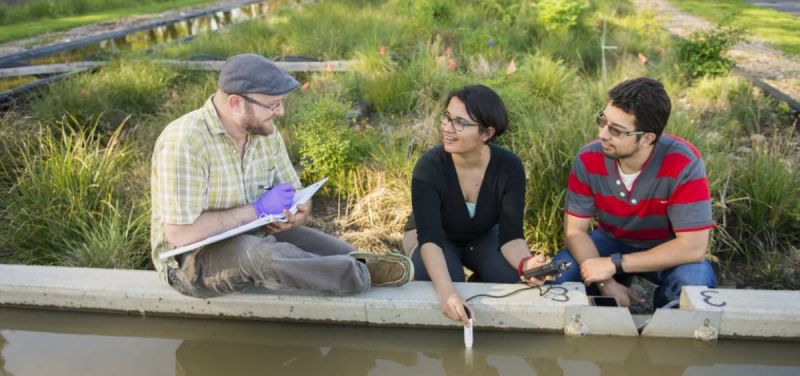Crowdsourcing Can Solve Tricky Water Issues
Published on by Water Network Research, Official research team of The Water Network in Social
An Oregon State University researcher is leading the charge for crowdsourced solutions to complex water management problems.
By Steve Lundeberg
“Gone are the days when some central government authority was the solver of every water problem, deciding how water is stored, treated, and distributed,” said Meghna Babbar-Sebens of the OSU College of Engineering. “Water issues affect everyone. We are all part of this planet that’s growing rapidly and changing rapidly. Flooding, drought, contaminants in our rivers and drinking water – those are issues that affect every person’s life.”

Source: OSU
Babbar-Sebens, associate professor of civil and construction engineering, is working on artificial intelligence technologies that “democratize” water management while harnessing the combined power of humans and computers to find solutions – often ones that are based on natural processes, such as green infrastructure and conservation practices.
“We need to realize our water infrastructure is aging, and we don’t have the capacity just to keep building new treatment plants and levees and reservoirs,” she said. “The future of water infrastructure needs to incorporate solutions that are flexible and resilient to the changing environment. Luckily, as we envision the next steps for our infrastructure, we have the opportunity to learn a lot from nature and mimic those processes.”
Watershed landscapes used to include naturally existing features and ecosystems, such as wetlands and riparian buffers, but many of those have been removed to make space for human activity.
“We’ve lost useful services provided by watersheds and exacerbated multiple problems, including floods and chemical runoff from landscapes into our water supplies,” she said. “Re-introducing these ecosystems can renaturalize the hydrologic cycle, solving both water quantity and water quality problems in mixed-land-use watersheds.”
That isn’t to say it will be easy, she notes. It’s a complex process that involves multiple stakeholders and constraints. But incorporation of human imperatives and preferences into the design process results in solutions that are more likely to be acceptable to everyone involved.
 To that end, Babbar-Sebens and collaborators at OSU and Indiana University-Purdue University, Indianapolis, have come up with a web-based, participatory planning tool called WRESTORE, which stands for Watershed Restoration using Spatio-Temporal Optimization of Resources.
To that end, Babbar-Sebens and collaborators at OSU and Indiana University-Purdue University, Indianapolis, have come up with a web-based, participatory planning tool called WRESTORE, which stands for Watershed Restoration using Spatio-Temporal Optimization of Resources.
WRESTORE employs advanced, human-in-the-loop optimization methods known as IGAs – Interactive Genetic Algorithms – that receive human feedback.
The feedback is based on people’s knowledge as well as their subjective and unquantified preferences during the algorithm’s search process, and the IGA uses human feedback to identify strategic types and locations of nature-based management solutions.
For example, a farmer worried about erosion on his or her land can look at multiple management practices and locations where the practices might be used. For agricultural watersheds, WRESTORE is able to model seven different conservation practices: wetlands, filter strips, grassed waterways, strip cropping, cover crops, crop rotation, and no-till tillage.
“The same approach can be extended to urban environments where natural features such as rain gardens, bioswales, green roofs, etc. provide similar benefits when integrated into our built environment,” Babbar-Sebens said. “Since many of these features would need to be implemented on private properties, citizens need to get involved in finding solutions and collaborating with city officials and engineers.
“Information technology and artificial intelligence have this really neat opportunity to come in and help find how to best use crowds to find unique solutions to solve very complicated water management problems,” she added. “Machines learn from humans, humans learn from machines, and we can solve problems together.”
Source: Oregon State University
Media
Taxonomy
- Resource Management
- Research
- Business Strategy
- River Studies
- Sustainable Water Resource Management
- River Restoration
- Flood management
- Water Software
- flood protection